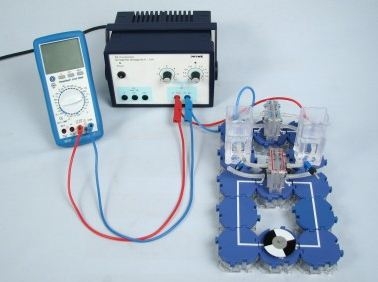Principle
All fuel cells fundamentally consist of two electrodes (cathode and anode) and an electrolyte which separates the two electrodes from each other. The mode of operation corresponds to a reversed electrolysis. Fuel cells are classified according to the type of electrolyte. Their working temperature, efficiency and application area, for example, are hereby given.
The PEM fuel cell (abbreviated as PEMFC, polymer electrolyte membrane fuel cell) requires neither acid nor alkali. The "waste product" of it is simply water. The electrolyte consists of a thin, proton-conducting membrane, the two sides of which are coated with a catalyst material. These sides act as the fuel cell cathode and anode.
Benefits
- Experiment is part of a complete solution set with a total of 10 experiments for Renewable Energy fuel-cell technology
- The power supply used is versatile and is particularly suitable for pupil tests for all ages
- Doubled learning success: Electric circuit diagram on top, real components can be seen at the bottom
Tasks
How can hydrogen be used to drive a small electric motor?
In this experiment, the PEM fuel cell generates electric energy from hydrogen and oxygen, whereby the PEM electrolyser is used to produce the two gases.


